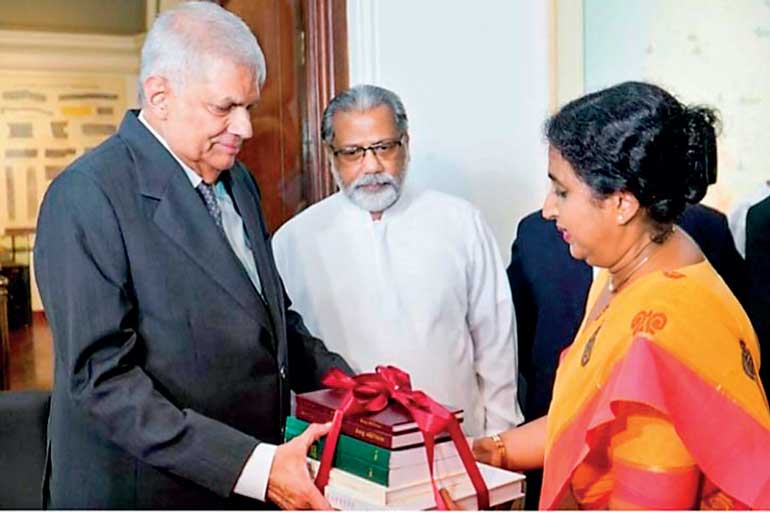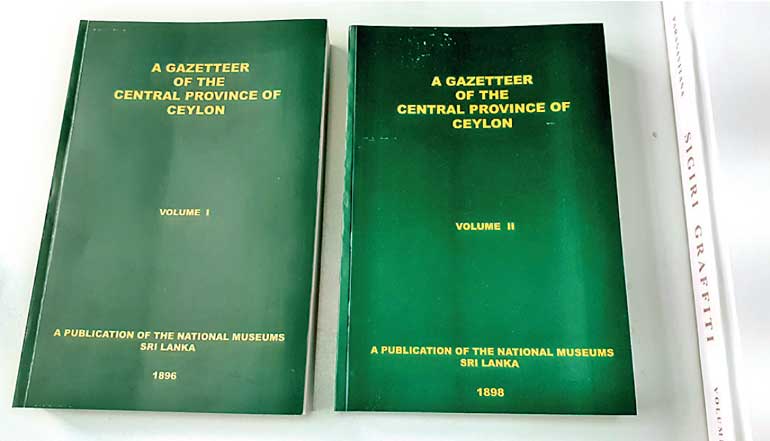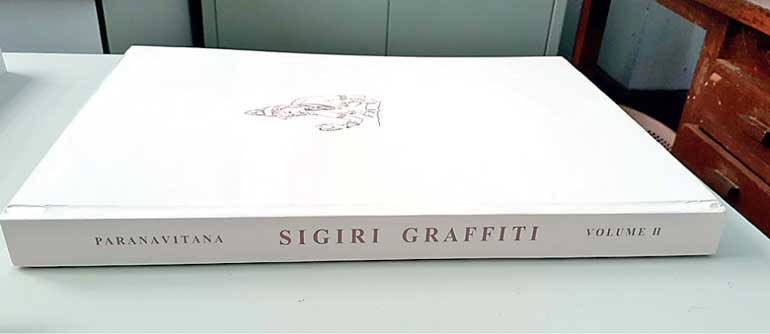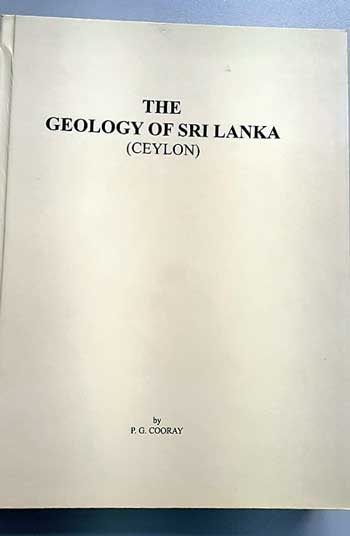Saturday Mar 15, 2025
Saturday Mar 15, 2025
Saturday, 25 February 2023 00:05 - - {{hitsCtrl.values.hits}}

President Ranil Wickremesinghe was presented with the publications by Department of National Museums DG Sanuja Kasthuriarachchi at the special exhibition which was held to mark 75th Independence Day celebrations
By Randima Attygalle
“The beautifully blue eyebrows, the swan-like breasts, a slender waist, the lips which are as if they have been made of coral, in truth, exhibited as if Siri (the goddess of beauty) herself stood before one’s face.”
“We looked at the heart shattering fair damsels on the rock wall. They seemed as if they stood wondering where their lord had gone.”
“Hail! Having seen Sihigiri to my heart’s content, I have become happy, Ah the golden coloured ones in the mountain side remain there happy as in former times.”
“Strewing, bright hued flowers in her shining dark blue hair, the golden-coloured one, with her resplendent smile, captivated the minds of those who are here.”
The homage thus paid to Sigiri apsaras on its Graffiti Wall by those who were bewitched by their beauty for centuries is brought close to the modern reader in Prof. Senarath Paranavitana’s work ‘Sigiri Graffiti’ found in two volumes.
Sigiri Graffiti Volume 2 first published in 1956 by the Oxford University Press was recently republished by the Department of National Museum, funded by UNESCO. Authored by the one-time Archaeological Commissioner and the eminent archaeologist, Senarath Paranavitana, the book is a collector’s item, now available for purchasing at the Publication Division of the Colombo National Museum. For the researcher, historian and the lover of Sigiriya history, this publication provides the original text of Sigiri graffiti, their English translations with notes and a glossary.
Among the other recently reprinted Museum publications, funded by UNESCO which are available for purchase at the Colombo Museum are, ‘The Geology of Sri Lanka (Ceylon)’ by P.G. Cooray and ‘A Gazetteer of the Central Province of Ceylon’ (Volume 1) and 11 by Archibald Campbell Lawrie. These publications were presented to President Ranil Wickremesinghe by the Director General of the National Museums Sanuja Kasthuriarachchi at the ‘Freedom Path’ artefacts exhibition which was organised to mark the 75th Independence Day celebration. The exhibition was inaugurated by the President at the National Museum, Colombo.
The Geology of Sri Lanka (Ceylon) by P.G. Cooray, first published in 1967 and revised in 1984 comes with a Foreword by Prof. John Sutton from the Imperial College of Science and Technology, London. Sections of the book under Geology of Sri Lanka include Ratnapura region, Jaffna limestone, mineral resources of the country, Geology and water supply, Geology and Engineering and diverse soils of the island. The book also documents the ‘Fourteen Great Soil Groups’ which have been recognised in the country.
The conclusion of the publication: “We the people, especially the young people of Sri Lanka must take the second and more important steps of looking after our own particular environment ourselves. We should take steps not to pollute it, not to destroy it, not to harm it, not to waste it and to prevent others from doing so. Only in this way can we continue to make this beautiful island of Sri Lanka a place in which to live and work and “have our being”, seems a fitting one, most relevant to the current times where civic consciousness of Sri Lankans regarding their environment seems to be at dismal levels.
‘A Gazetteer of the Central Province of Ceylon’ (Volume 1) and 11 by Archibald Campbell Lawrie (1896), District Judge of Kandy from 1873 till 1892 and Senior Puisne Judge of the Supreme Court of Ceylon is a painstaking compilation of people and places of the Central Province of the island. A quick reference guide in form of a glossary in the alphabetical order, the first volume of the Gazetteer covers from Adams Peak to Kuruwawa – a village in Matale. The second volume traverses from Labugolla – a hamlet in Ramboda to Yattakule – a village in Gangapalata Korale, Udunuwara. The publication also refers to critical events in the history of the Kandyan kingdom including the tragic end of Ehelepola Disave’s family.
In the Preface to Volume I, the author notes that it is essentially his own book, compiled with materials gathered during his 18 years of office in the island. “Like the Chronicler in ‘News from the New World’ I have found it a far harder thing to correct my book than to collect it. I acknowledge the great assistance given to me by T.B. Paranatella and by Mr R.J. Perera, who were for many years trusted clerks and friends of mine in Kandy,” notes the author.
In the preface to the second volume of the Gazetteer which was published in 1898, Lawrie alludes to a third volume which will contain a short history of the Kandyan kingdom and constitution, a description of the town of Kandy and its temples, what he knows of Kandyan Law and customs and also an index and Glossary. However, this third volume was never realised.
The two volumes completed with citations by other notable historians and government agents at the time serve as rich reference materials for the researcher and history lover alike.



Discover Kapruka, the leading online shopping platform in Sri Lanka, where you can conveniently send Gifts and Flowers to your loved ones for any event including Valentine ’s Day. Explore a wide range of popular Shopping Categories on Kapruka, including Toys, Groceries, Electronics, Birthday Cakes, Fruits, Chocolates, Flower Bouquets, Clothing, Watches, Lingerie, Gift Sets and Jewellery. Also if you’re interested in selling with Kapruka, Partner Central by Kapruka is the best solution to start with. Moreover, through Kapruka Global Shop, you can also enjoy the convenience of purchasing products from renowned platforms like Amazon and eBay and have them delivered to Sri Lanka.
Discover Kapruka, the leading online shopping platform in Sri Lanka, where you can conveniently send Gifts and Flowers to your loved ones for any event including Valentine ’s Day. Explore a wide range of popular Shopping Categories on Kapruka, including Toys, Groceries, Electronics, Birthday Cakes, Fruits, Chocolates, Flower Bouquets, Clothing, Watches, Lingerie, Gift Sets and Jewellery. Also if you’re interested in selling with Kapruka, Partner Central by Kapruka is the best solution to start with. Moreover, through Kapruka Global Shop, you can also enjoy the convenience of purchasing products from renowned platforms like Amazon and eBay and have them delivered to Sri Lanka.